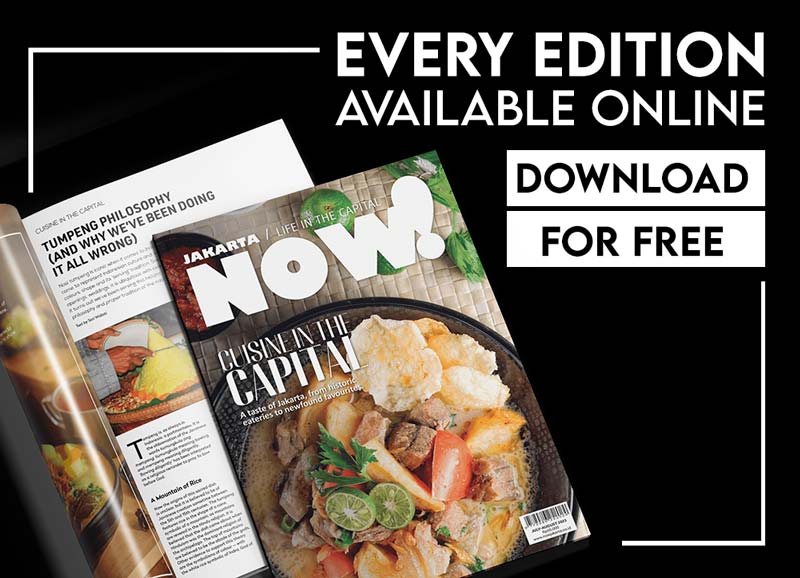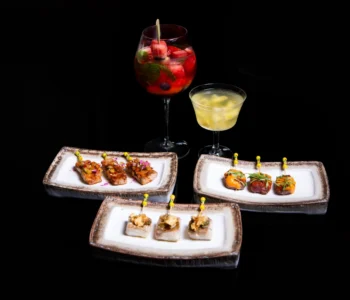
Delve into Indonesia’s traditional health concoctions, jamu, through an insightful workshop that shares not only the methods and recipes of these age-old remedies, but their philosophies as well.
More than just a health drink, there is a culture and lifestyle associated with both the making and drinking of jamu, explains Nova Dewi, Founder of Suwe Ora Jamu. Her grandmother was a practitioner of kejawen, or Javanism, and instilled in her an appreciation of the herbal remedies, a tradition deeply rooted in the Javanese culture.
These teachings come out of during the ‘Signature Jamu Making 101’ workshop, where participants create their own jamu creations, from the raw spices and herbs, to the final elixirs ready to drink. But this is more than just a cooking class, the experience infuses knowledge of the ingredients used and Nova expands on the aspects of jamu beyond just its physical benefits.

Classes are held at many venues across Jakarta, including MBloc Space and Menteng Huis, but the atmosphere is best at the Suwe Ora Jamu café found at Komunitas Salihara Arts Center, South Jakarta. The art and cultural centre invites visitors into a calm oasis in Pasar Minggu, where the ground floor café presents a charming ‘jaman doeloe’, or vintage, aesthetic that suits the experience at hand.
Jamu typically consists of eight different parts of plants: akar (root), rimpang (rhizome), batang (stem), daun (leaf), bunga (flower), buah (fruit), biji (seed) and kulit (skin, or rind). Armed with a knife, chopping board, grater, pestle and mortar, the workshop begins.
There are many different kinds of jamu, but typically the most common include kunyit asam, beras kencur and wedang jahe. Nova guides participants to create these but importantly helps to explain the flavour elements and their general effect on the body. “Bitter flavours are for healing, spices are for activation, the sour like from tamarind are more for digestive detoxes,” she explains. “These are not your regular cooking ingredients, for jamu, we must find the more mature roots and rhizomes,” she says, holding out bulbous turmeric and gingers, spritzing their aromas into the air upon being snapped open.



We prepare the ingredients for a very complete elixir, jamu wedangan, grating lime skin, crushing and slicing lemongrass stalk, grinding lime and coriander seeds with clove and black pepper, cutting turmeric, temulawak (java ginger) and galangal. “Whilst you may know the ingredients to a jamu, knowing how to prepare them is key,” notes Nova.
The process is patient and peaceful, as the preparation is very much a part of what Nova calls the ‘jamu lifestyle’. This was something she rediscovered upon moving to Jakarta in 2009 from Surabaya. She felt something was ‘off’, that the dizzying hum and the ever-moving rhythm of the metropolis made her feel uptight and uneasy. Something was missing. Back home, and across Java in fact, wedangan culture is common, where patrons enjoy steaming teas and herbal infusions and jamu drinks as they chat and snack. Jakarta, in a constant drive towards modernity, seemed to have left this culture behind. This is what she was missing.

So, as a form of ‘self-love’, a little self-prescribed therapy in the city, she began to make jamu, first sharing it with friends and reintroducing the idea of drinking it socially. This prompted her to open her first shop-café in 2012, seeing that there was indeed interest. Jamu introductory classes soon followed, and later the workshops.
Through the jamu workshops, participants are invited to embrace the very therapeutic nature of preparing the traditional herbal remedies. Something they are encouraged to do at home, a moment to slow down and be present. Not to mention having a healthy drink to add on to that.


In preparing the final concoctions, you mix and match the different components. A clear wedangan of hot water, spices, leaves and seeds are savoured, opening up the blood vessels and waking up the senses; a colourful mixture of roots and rhizomes, warm water soaking through its healing essence. “Making jamu is learning from nature”, explains Nova, outlining how we the ‘effects’ reflect where the ingredients come from too: exposed parts of the plant (stalks, leaves, spices) help us to be more open, connect with the ‘external’; whilst those underground (roots, seeds, rhizomes) give us growth and regeneration. “This is part of the jamu philosophy,” she says, sharing precious lessons from her grandmother.
On 6 December 2023, ‘Jamu Wellness Culture’ was officially recognised as an intangible cultural heritage by UNESCO, and that perfectly surmises what workshop participants take home. Other than one’s own jamu concoction, bottled and ready to drink, workshop participants go away with a newfound appreciation for this ancient Javanese practice, knowledge of nature’s inherent healing properties and a new ritual to make the pace of life a little more bearable in the city.
Jamu workshops are available as private or large group bookings; venue depends on the number of participants. Workshops are conducted by Cerita Jamu, part of Suwe Ora Jamu. Contact them directly to find out more.
Dive into Indonesia’s health concoctions: ceritajamu@gmail.com | ceritajamu.com







